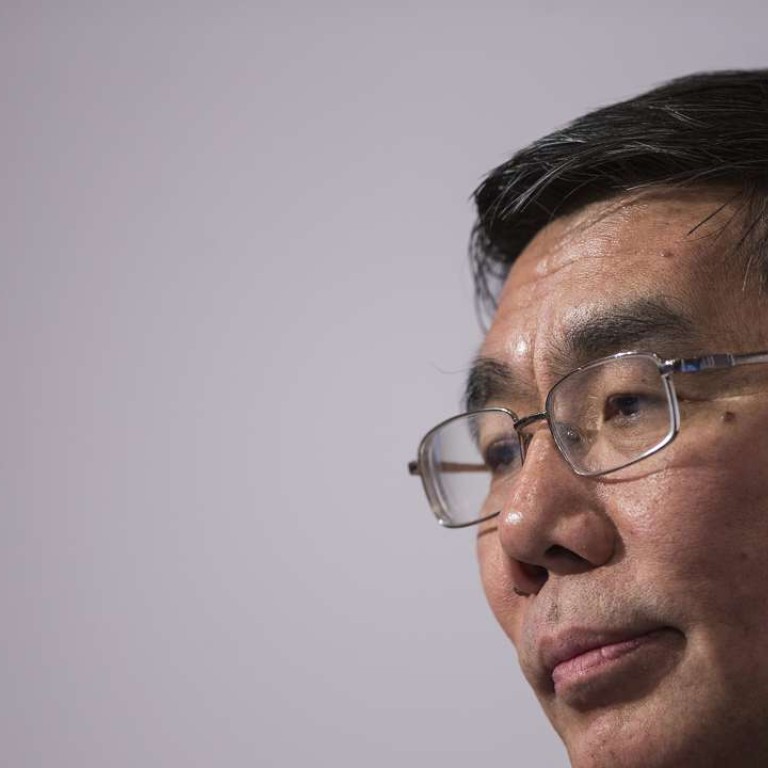
Chinese banks are set to take on more bad loans as the economy slows
Bad loan ratios at banks could more than treble in the next couple of years, analysts said
The percentage of bad loans as a total held by China’s banks will more than treble in the next two years because growth in the world’s second-largest economy is slowing, BOC International analysts Lin Yuan and Polar Zhang said in a report last week.
The industry’s non-performing loan (NPL) ratio could climb to 6.6 per cent by 2018, they said. That compares with 1.67 per cent at the end of 2015. The BOCI analysts said NPLs may total 9.27 trillion yuan (HK$11.10 trillion) by 2018. That would be up from 1.27 trillion yuan last year, itself a 10-year high, according to China Banking Regulatory Commission (CBRC) data.
“The largest concern about Chinese banks is asset quality, at least over the next two years,” Lin and Zhang said.
The largest concern about Chinese banks is asset quality, at least over the next two years
An NPL is borrowed money where the debtor has not repaid on time for at least 90 days. The borrower has defaulted or is close to being in default.
China’s big five banks — Industrial & Commercial Bank of China, China Construction Bank, Agricultural Bank of China, Bank of China and Bank of Communications — announced little-changed net profit growth and soaring bad debts. They lowered dividends for 2015.
China’s economy grew at a 25-year low of 6.9 per cent last year. The government’s 13th five-year plan anticipates average annual growth of 6.5 per cent.
There is a “very high possibility” that banks’ overdue and special-mention loans would turn into NPLs under the weak economic environment, the analysts said.
The overdue loans of all listed Chinese banks, both in the A-share and Hong Kong markets, were 80 per cent higher than the NPL balance for the first half of 2015, the BOC International report shows.
The special-mention loans, those not considered to be NPLs but where borrowers are experiencing repayment difficulties, made up 3.77 per cent of the total loans of listed banks at end-September, 2015.
Both corporate loans and personal loans face challenges.
Corporate loans, constituting 66.08 per cent of domestic banks’ lending last year, may increasingly turn sour in the wholesale and retail sectors, the BOCI report shows.
Bad debts have spilled over from the Yangtze Rive Delta to beyond, from small and medium enterprises to large firms with overcapacity problems, China Merchants Bank executive Vice President Wang Liang said in a briefing last week.
Personal loans may also turn bad, mainly in credit cards and personal business loans which are more sensitive to economic slowdowns than mortgages, the two BOCI analysts said.
“Most banks expect continued asset quality pressure in 2016,” four analysts at Morgan Stanley said in a recent report.
China has cut its interest rates six times since November 2014, though such a stimulus takes effect only when banks continue to make loans. The country’s domestic financial sector contributed 17 per cent to gross domestic product last year, or 1.2 per cent economic growth. Banks must increase their assets to shore up the economy, the BOCI report said.
“We estimate that now is still not an appropriate time for the government to solve the bad debt problem within a short time frame given the current situation of the country and the government’s financial strength,” BOCI analysts said.
The government has put forward tools like debt to equities swaps — to turn borrowers’ debt into the bank lenders’ equities — which may cut some enterprises’ leverage and improve the balance sheets at some commercial banks.
“Debt to equities swap is a bigger risk for banks,” Castor Pang Wai-sun, Core Pacific Yamaichi head of research said. “It will prettify financial books in the short run but the banks will still be left holding stocks in firms that face difficulties.”

